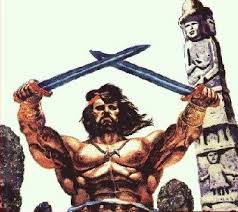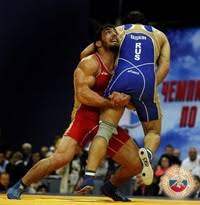SLAVIC-GORITSKAYA FIGHT (part4)
 PROHIBITED TECHNIQUES AND VIOLATIONS OF RULES.
PROHIBITED TECHNIQUES AND VIOLATIONS OF RULES.
Limitations on permissible technical methods in the Slavic-Goritsky struggle are minimal and are associated mainly with the peculiarities of a particular style. So, in the category of “Radogor” it is not allowed to strike with legs, and in the category of “Hem”, on the contrary, attacking actions with only legs are allowed. There are no restrictions on the rigidity and places of impacting the equipment permitted by the rules.
The rules do not allow you to scratch, bite, or hit punches in the groin and on the spine, etc. Forbidden actions also include avoiding a fight or talking opponents during a fight, any actions against an opponent after stopping a bout. It is forbidden to remove protective equipment during the battle, incorrect behavior in relation to the opponent and judges is not permissible. (It is also forbidden to shoot at the enemy from a distance closer than 5 m in the “Fire battle” category)
JUDGING.
The judiciary, consisting of three people, gives points to the participants of the duel for technical actions (points are awarded on the basis of the correctness, technical purity and external persuasiveness of the delivered strike and are removed for inept, ineffective or untimely defensive actions). The chief judge of the competition decides on the victory (defeat) of the participant in the battle – based on the judges ’score – but does not participate in scoring points for technical actions (nevertheless, in a controversial situation he can appeal the decision of the veche).
During the Blade Fight, the referee’s chamber appoints two additional observers who are required to monitor the actions of the fighters. The observer cannot stop the fight himself, but in the case of a skillfully executed and not noticed by the field judge one of the competitors, he calls the judge with a gesture (raised hand) with a proposal to stop the fight and listen to the observer’s opinion.
DEFINITION OF THE WINNER IN THE FIGHT.
In all styles of the Slavic-Goritsky struggle (except for Blade Firefight), the following outcome of the fight is possible:
– A clear victory is declared if one of the opponents cannot (or refuses) to continue the battle;
– victory with a clear advantage – according to the judges, one of the rivals is noticeably superior to the other in terms of combat effectiveness or technical training (a victory declared as one of the fighters due to repeated violation of the rules is equal to “victory with a clear advantage”);
– a victory in points is awarded on the basis of counting points put down by the judiciary.
In the categories of “Classic fight” and “Assault battle”, for each match the athlete receives from 1 to 5 points, which allows to identify the strongest of the rivals according to the results of two fights.
Scoring is based on:
clear victory – 5
victory with a clear advantage – 4
overall victory – 3
victory by technical advantage – 2
victory by physical advantage – 1
draw – 0
defeat in view of the physical or technical advantage of the adversary – minus 2
defeat (with a clear victory or victory with a clear advantage to the opponent) – minus 3.
If the victory indicators coincide, points for defeat are taken into account. Each warning for violation of the rules received during the match reduces the athlete’s victory by one step.
Evaluation of the actions of fighters is carried out by the judiciary based on the general impression of the following indicators:
– attacking abilities in the application of kicks and hands;
– defensive abilities of a fighter;
– technical and tactical art of warfare.
In the “Total battle” category, the points are scored according to a similar scheme, but there are some peculiarities in scoring:
– refusal (or inability) of the adversary to continue the battle while standing, – a clear victory with a doubling of points;
– a similar situation, but in the situation on the ground – a clear victory;
– stopping the fight by judges in cases provided for by the rules, – victory with a clear advantage;
– the battle was not prematurely stopped, but one of the rivals clearly demonstrated its tactical and technical advantages – victory in terms of the general indicator;
– slight technical superiority – victory with a technical advantage;
– superiority over the enemy only due to physical data – victory by physical advantage;
– the inability to identify signs of superiority is a draw.



